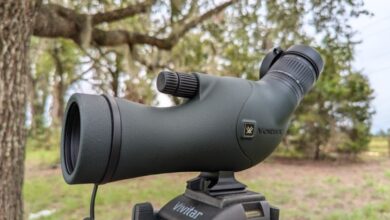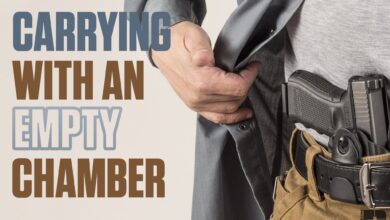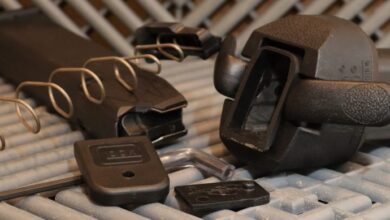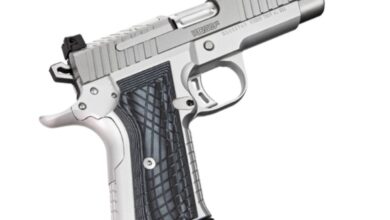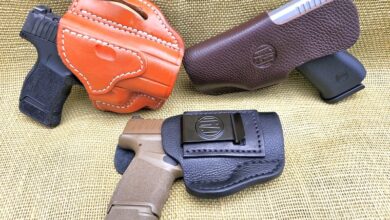Ultradyne C4 Sights: More Than a Backup

Have you ever encountered a piece of technology, a feature, or a gear that you thought, “This would have been perfect 20 years ago?” Not that it’s not new or innovative, but other forms of technology have taken over and relegated it to the sidelines. That’s how I feel about the Ultradyne C4 sights. These sights, which would have been a force to reckon with before optics took over, are now often seen as mere backups to iron sights. But to call them backups is an insult when you consider their performance. The C4 sights are truly innovative and unlike any other flip-up sight system in the world.
What’s The Big Deal With the Ultradyne C4 Sights
I want you to picture the layout of most iron sights, specifically on an AR-15. The rear sights consist of a circular peep sight that, when viewed through, finds a rectangular post. With the sights aligned, you put the post on target. It’s simple and it works. According to Ultradyne, the traditional style of sights is nonintuitive.
The brain has to align a rectangular post with a circular rear and ignore the wings of the front sight. With Ultradyne’s C4 sights, you look through a familiar rear sight, and instead of aligning with a rectangular front sight, you’re aligning it with a concentric circle that is milled through the front sight. The hole within the front sight aligns with your target, and you look through both sights and at the target.
Let’s talk about the sight picture provided by the Ultradyne C4 sights. Unlike other iron sights, the C4 sights allow you to see your target actively and give you a very clear sight picture. This is the only set of iron sights I know of that allows you to be target-focused instead of focused on the front sight for accuracy. The size of the circle in the front sight can vary depending on the user’s preference.
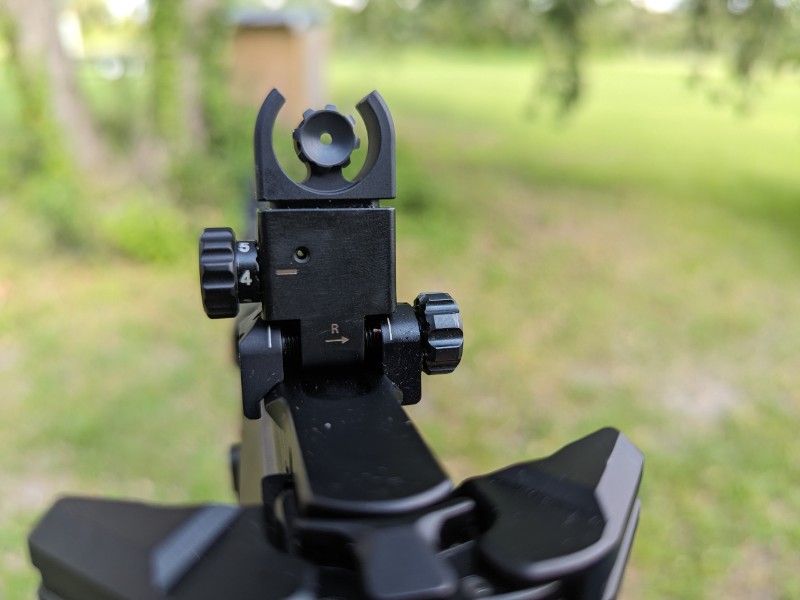
The bigger the circle allows you to see more of the target, and the less precise your shots land. With the smaller the circle, you’ll see less, but be more precise. This flexibility in sight picture is a major advantage of the Ultradyne C4 sights, as it allows you to adapt your shooting style to different situations and targets.
The hole in the front sight only guarantees precision within that circle. The larger it is, the less precise you’ll be. Ultradyne makes front-sight posts in 8, 10, 12, and 14 MOA and standard posts. I have the 12 MOA variant on my set of C4 sights.
A Basic Rundown Of the C4 Sights
These metal sights are made precisely and look fantastic. When not in use, the sights flip down and out of the way. The system features mostly tool-less adjustments. The front sight is adjustable for both windage and elevation. You must ensure the rear sight and the front circle remain aligned. Elevation adjustments for the front sight don’t require a tool, but windage adjustments require a small flathead screwdriver.
The rear sight doesn’t require any tools to adjust windage or elevation. The rear sight also has a scale built into the design. It goes from 200 to 600 with 100-yard increments and acts as a bullet drop compensator. For the compensator to work, you have to fire a 55-grain 5.56 cartridge that’s moving at 3,270 feet per second, and the iron sights need to be 21 inches apart.
The C4 rear sight has a removable aperture. Users can alternate between a .50 and .70 rear sight on the fly without tools. The design is clever, and the .50 allows for more precision, while the .70 allows for more speed. The ability to swap on the fly is nice. It only takes a minute, and you can transition the sights from precision to speed.

Ultradyne also makes a set of offset C4 sights, and I’d run those wide open. If this were a main sighting system, I’d run it with the .50 MOA rear aperture.
Slinging Lead
One thing that threw me for a loop with the C4 sights was that you zeroed your gun with the front sight only. All your windage and elevation calls were made with the front sight. The front sight’s elevation was 1.2 MOA per quarter turn. The circle in the sight is on all four sides of the front post, so quarter turns are fine. Windage was one-half MOA per click.
I’m out of practice zeroing irons, so dialing things in took me a minute. The manual suggests zeroing at 200 yards, which is possible, but it’s a lot easier to start at 50 and go to 100, then 150 and 200 zeroing along the way. I don’t have any massive targets and hate walking back and forth to check where my holes are. It’s much easier to zero it as you step backward, although it probably takes much more ammo.
As I zeroed the sights, I became a true believer in the Ultradyne system. After my zero, I became a dedicated acolyte. I prefer the .50 rear aperture and found it fast enough with extra precision. I could argue that as long as you have a good cheek weld, the .50 aperture is faster because I can center the front sight faster in it than the .70. The 12 MOA front sight is a good choice to get used to this setup, but now I’m craving a smaller MOA front sight, to increase my overall precision.
Through and Through
At 100 yards with the 12 MOA front sight, I see approximately 12 inches of the target. That’s a lot of targets to see, and I know my round will land somewhere within that 12-inch circle. This doesn’t sound like it would be very precise, but I was producing 3-inch groups at 100 yards with PSA Sabr ammo in a bench-rested position.
Like most iron sights, the enemy is darkness. As the sun dipped behind the trees, the light coming through the 12 MOA circle got dimmer. I imagine, with smaller MOA designs, low-light shooting would become even more of a pain. For that reason, I’d probably stick with the 12 MOA design and understand why they used that particular option as the base front sight.
Going Fast
What’s a better way to test a set of sights than going fast? How do I go the fastest? Well, I decided to attend an Action Steel match and try it out. Action Steel doesn’t allow rifle calibers, so I transitioned these sights from a proper AR-15 to my Aero Precision EPC. These sights make no practical sense on a PCC as their ranges are remarkably low, and these sights are remarkably precise.
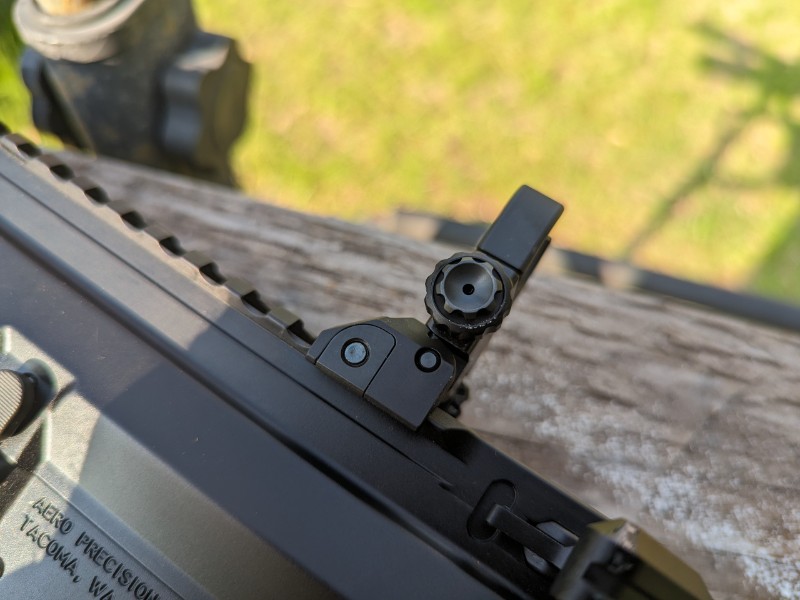
The only factors that make sense are speed and target focus. These iron sights act like red dots, so I can stare at my target instead of focusing on my front sight. I ran through the match with irons only and got some interesting looks and comments. Most people thought it was great, and this local match was very casual.
It took a slight adjustment since my competition brain is used to seeing a red dot. Still, I blazed through most stages quickly and easily. I snapped the .70 aperture on for a little more forgiveness when my cheek weld wasn’t the best. The biggest challenge came from awkward shooting positions and adhering to eye relief. Still, I didn’t feel too challenged by the setup. I was pleasantly surprised by how fast I could go on most courses of fire with just the irons.
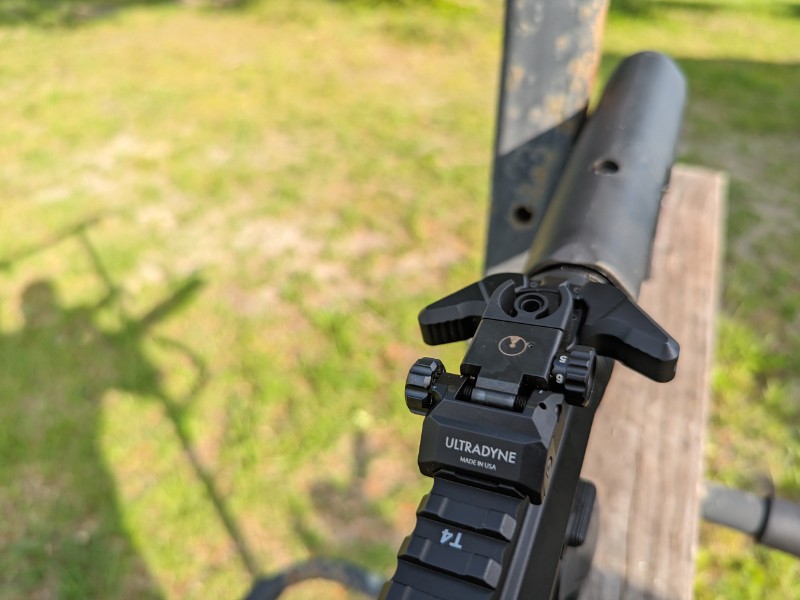
The little sights kept up quite well, and my times weren’t that much slower than usual. You might be curious how I fared and where I placed. Believe it or not, I took first place in the PCC division. You should believe it because I was the only one who shot PCC that day. Some wins you just have to take.
The Ultimate Iron Sights
I’ve always said that optics are more effective, but iron sights are more fun. I stand by that, and the C4 sights are a ton of fun. As far as iron sights go, they are extremely effective and precise. They aren’t cheap, but they are American-made products that are extremely high-quality. Give them a peek, and let us know what you think below.
The post Ultradyne C4 Sights: More Than a Backup appeared first on The Mag Life.
Read the full article here


